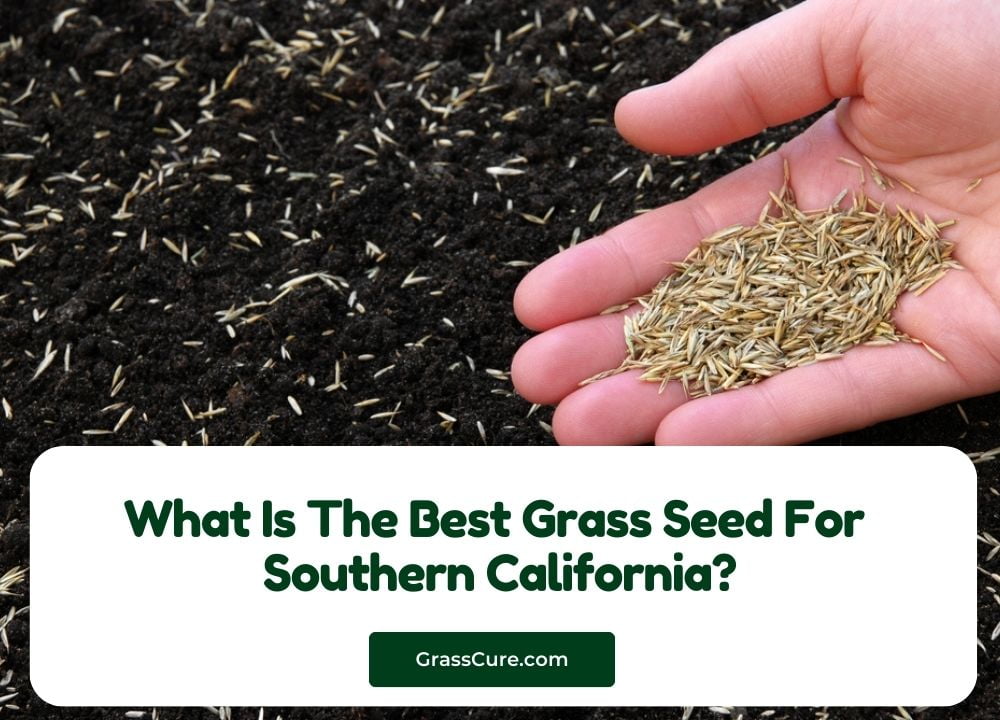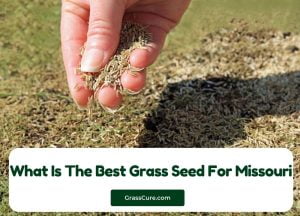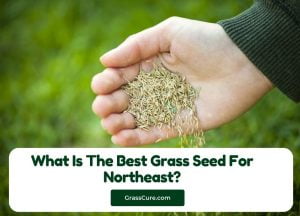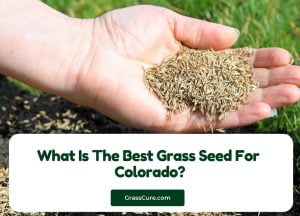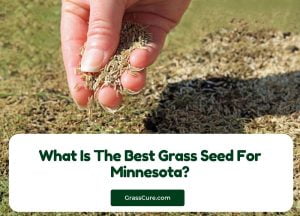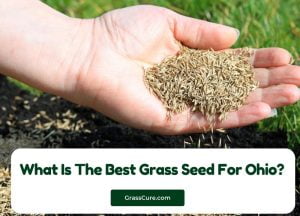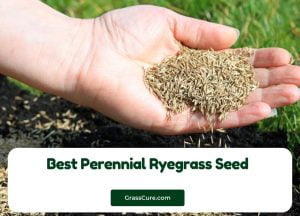When it comes to maintaining a lush and vibrant lawn in Southern California, choosing the right grass seed is of paramount importance. The Golden State’s unique climate and environmental conditions can make it a bit tricky to find the perfect grass variety that thrives year-round. Whether you’re dealing with the scorching heat of summer or the occasional rainfall in the winter, finding the best grass seed for Southern California is crucial for achieving that picture-perfect lawn. In this blog post, we’ll explore the top grass seed options that are well-suited to the Southern California climate, helping you achieve a lawn that’s the envy of your neighborhood.
Contents
1. Zoysia grass
If you’re in Southern California, Zoysia grass is the most heat-resistant of all grass species, so it’s actually a great place to start looking for grass. It even works great in the sun and dry weather.
Similarly, De Anza is a variety grown by Zoysia, particularly in Southern California. It is drought and salt-resistant and has the best abrasion resistance of Zoysia grass suitable for the California coast. Compared to other warm grass types, it can be cut more narrowly (and mow less frequently), and its charming blue-green color lasts longer in the fall.
Although some other grass types require frequent stem removal during the hot season, De Anza zoysia’s slow-growing grass does not accumulate stems and reduces maintenance.
However, Zoysia grass has some disadvantages. It grows so slowly that it grows in bright sunlight, which means it cannot handle a lot of traffic. It is not the perfect lawn for a football field or yard where you want to have fun every weekend. If you have pets or children, Zoysia grass may not be able to handle them.
However, Zoysia grass is ideal for low-traffic lawns. It has a dark or medium green texture and can be cut very low, minimizing the frequency of cuts. Moreover, the varieties of Zoysia grass you may be interested in are:
- Zoysia grass
- Zoysia Glass Emerald
- Zoysia Japonica
2. Bahiagrass
Bahiagrass may be better if the lawn is sunny; the soil is low and is always dry. It has deep roots and provides water and nutrients not available in other grass species. It also prevents erosion and increases the value on the beach. Similarly, the types of Bahian grass that can be useful are:
- Pensacola Bahia
- Common Bahia
- Argentina Bahia
3. Bermuda grass
Bermuda grass works well in dry and sunny conditions. Unlike the other grasses on this list, Bermuda varieties are perfect for your soil, regardless of soil type.
Some work well with traditional fertilizers. Others prefer poor soil. Besides, many Bermuda grass species can handle many people without leaving, which is very convenient for those who want to use green space.
Trendy brands plants like Santa Ana, Tifway, and Bullseye are excellent choices in the area. These grasses are very drought and salt-resistant (vital if you live in coastal areas). It can also be used in high-traffic areas such as children and pets. Bermuda can be aggressive, so it is essential to contain it and watch it spread.
Most Bermuda grass brands actually like direct sunlight. If your lawn has partially shaded areas, you should definitely try the Bermuda grass more shade tolerant than most other lawns.
Similarly, here are some of the most useful species of Bermuda grass:
- Common Bermuda
- TifSport
- Dirt EXP
Check Best Bermuda Grass Seed
4. St. Augustine
Salt is also a challenge for plants that have not yet evolved to handle salt, such as sea salt. Although grass is not a plant that grows directly on the coast, the varieties of St. Augustine are saltier than most varieties. Besides, it has a beautiful bluish-green color and dark leaves, which makes it ideal for use on lawns.
Saint Augustine grows better in the shade than most other grasses in the warm season, which is also used in partial shade. However, it does not actually consume a lot of traffic. It is not the best lawn for the park, but it works well on the lawn.
Besides, this grass is the first choice in many places in the south because it can withstand traffic, high temperatures, and the right shade.
It can turn black quickly when water is scarce, but it regenerates quickly when watered. The downside is the rough texture, which is a by-product of wider blades but is still perfect for most uses. Try planting palmetto or sun clips in the meadows of southern California.
5. Buffalo grass
If you actually want to spend more time on the lawn, buffalo glasses are a great choice. It settles very slowly, but it is very drought tolerant at the beginning of its work due to its deep roots. Remember that winter dormitories exist for a long time. So if you need green grass all year round, this is not the best choice.
6. Dutch white clover
Dutch white clover is a lawn tonic that works well in all areas. Similarly, it is excellent for covering bald heads and beautifying already dense lawns. This is one of the most common ways to add nutrients to the soil to induce pollinizes and is ideal for gardens.
Dutch white clover works well in sunny, dark places. It requires a moderate amount of water, but does not need fertilization, is superior to local weeds, and grows in poor soils. Whether you have a problem with your lawn or just want to beautify your garden, White Clover is one of the most beautiful and straightforward lawn additives.
FAQ
Q: What is the best time to plant grass seed in Southern California?
A: The best time to plant grass seed in Southern California is during the fall or early spring. This period typically provides the ideal temperature and moisture conditions for seed germination and establishment. Fall planting takes advantage of cooler temperatures and potential winter rains, while early spring planting allows the grass to establish before the hot summer months.
Q: Which grass varieties are suitable for Southern California’s climate?
A: Several grass varieties thrive in Southern California, including Bermuda grass, Zoysia grass, and St. Augustine grass. Bermuda grass is a popular choice for its drought tolerance, while Zoysia grass offers a lush, dense carpet-like appearance. St. Augustine grass is well-suited for coastal areas with milder temperatures.
Q: How often should I water newly planted grass seed in Southern California?
A: During the establishment phase, you should water newly planted grass seed in Southern California frequently but lightly. Aim to keep the soil consistently moist, typically by watering lightly two to three times a day. Once the grass is established, gradually reduce the frequency and water deeply and less often.
Q: Are there any specific soil preparations required before planting grass seed?
A: Yes, preparing the soil is essential for successful grass seed growth. Start by removing weeds, rocks, and debris from the area. Loosen the soil and amend it with organic matter to improve drainage and nutrient availability. Soil testing can also help you determine if any specific nutrients need to be added.
Q: Can I use native grass species for my lawn in Southern California?
A: Using native grass species can be a sustainable choice for your lawn in Southern California. Native grasses are adapted to the local climate and require less water and maintenance. However, they may have a different appearance compared to traditional lawn grasses, so consider your aesthetic preferences when choosing native grasses.
Conclusion
The grass is the most fertile plant on earth. There are actually many types to choose from, and choosing the wrong one can make the grass brown and challenging to work with. However, if you choose a style that suits your climate, usage, and maintenance needs, your lawn will require very little investment.
In Southern California, choosing the right grass is especially painful as you have to deal with sun and drought. That’s why we wanted to help you and share our favorite pieces of information with you.
You don’t have to choose the right lawn for your Southern California lawns. All of the above varieties are great choices without using too much water. If you consider other species or mixes, be sure to ask if your lawn or seed store is drought-tolerant.

